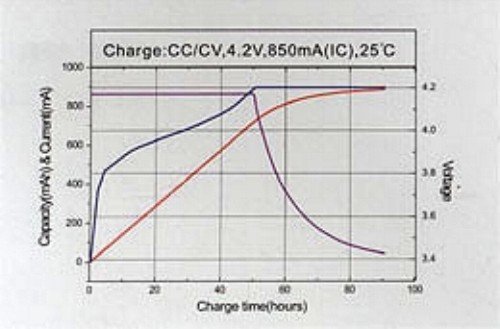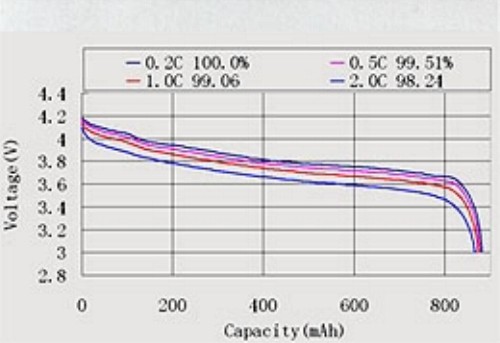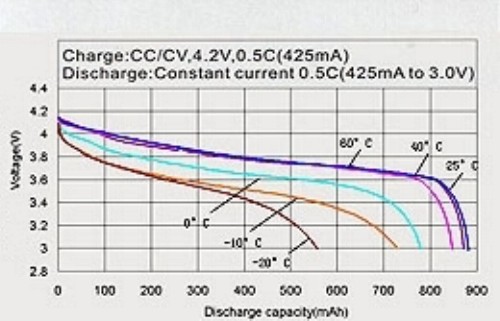LITHIUM POLYMER TECHNICAL DETAILS
| General technical details can be found below for the range of Encel Lithium Polymer cells / battery packs. |
| |
|
|
Basic Specification
|
|
|
Nominal Voltage
|
3.7V
|
|
Charge Method
|
Constant Current / Constant Voltage
|
|
Charge Voltage
|
4.2V per cell
|
|
Max. Charge Current
|
1C
|
|
Max. Discharge Current
|
2C
|
|
Discharge Termination Voltage
|
3.0V per cell
|
|
Operating Temperature
|
|
| Charge |
0'C to +40'C
|
|
Discharge
|
-20'C to +60'C
|
|
Recommended Storage Temperature
|
-20'C to +25'C
|
|
|
|
| To operate a Lithium Polymer cell or battery pack safely as a minimum two features are required charge termination and a cell / battery protection circuit: Charge termination is usually carried out by monitoring either the end of charge current or cell / pack temperature. Chip manufacturers produce a wide range of Lithium Polymer chargers which incorporate one of these features if not both. For those who do not wish to design thier own charger we can recommend external battery chargers, please contact us for details.
A cell / battery protection circuit must be fitted and should as a minimum protect against undervoltage, overvoltage and short circuits, for some applications a thermal protective device may also be required. B&K Encel offer a range of protection pcbs which can be fitted to cells and battery packs at the factory, please contact us for further details.
|
|
Performace Graphs
|
| The graph below shows a typical charge curve for a 850mAh Lithium Polymer Cell. Constant current / constant voltage (CC/CV) charge: 4.2V, 850mA, +25'C. |
 |
| |
|
| The graph below shows a typical discharge curves for different discharge rates. CC/CV charge: 4.2V, 1C, +25'C. Discharge: CC, end voltage 3.0V, +25'C |
 |
| |
|
| The graph below, shows typical discharge characteristics for a 850mAh Lithium Polymer cell at different temperatures. CC/CV charge: 4.2V, 0.5C, +25'C. Discharge: Constant Current 0.5C, end voltage 3.0V. |
 |
| |
|
|
| WARNING! |
| 1. Do not immerse the cell or battery in liquid. |
| 2. Store the Lithium Ion product in a cool, clean dry environment. |
| 3. Do not leave the battery near a heat source. |
| 4. When recharging only use the specified charger. |
| 5. Do not reverse the terminals. |
| 6. Do not connect directly to an electrical outlet. |
| 7. Do not expose to a fire or flames. |
| 8. Do not short circuit the cell or battery pack. |
| 9. Do not strike, damage or try to dismantle. |
| 10.Do not solder directly onto the cells. |
| |
|
|
|
|
|
| For application specific details or if it is intended to operate the cell / battery pack outside the above mentioned parameters please contact us for advice. |
| |
|